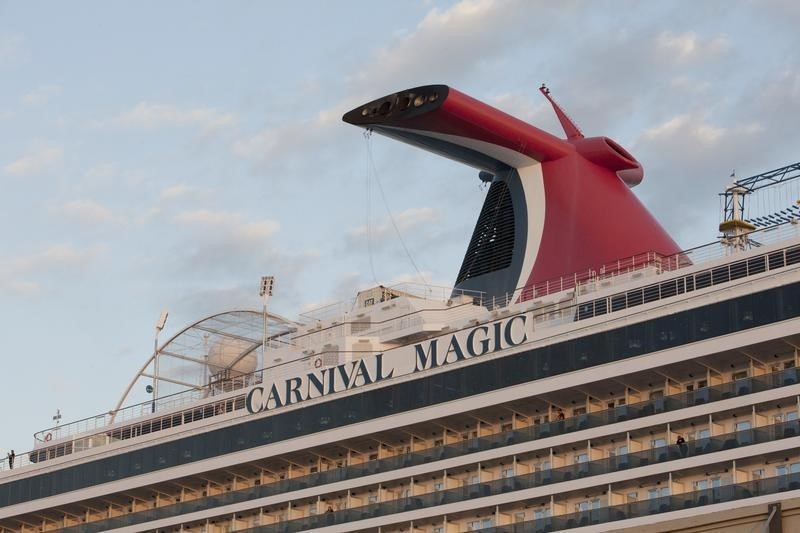Investing.com’s stocks of the week
By Geoffrey Smith
Investing.com -- Carnival Corp. (NYSE:CCL) stock edged higher in choppy early trading on Monday, after cruise operator posted a smaller-than-expected loss in the first quarter of its new fiscal year, as revenue rebounded to within 5% of pre-pandemic levels.
Carnival, which has lost over $25 billion over the last three years due to the acute problems caused by COVID-19 in the cruise sector, said revenue rose to $4.4B in the three months through February, thanks to the highest booking volumes for any quarter in its history. The release of pent-up demand meant that $5.7B of customer deposits for cruises flooded in, some 16% above its previous record, set in 2019.
As a result, the group's basic operating performance was markedly better than its own guidance. Adjusted earnings before interest, taxes, depreciation, and amortization rose to $382 million, more than 25% above the midpoint of the $250-350M guidance range it had given three months earlier.
Operating cash flow also turned positive for the first time since the pandemic.
"Our strong performance has extended into March and we expect this favorable trend to continue based on the success of our efforts to drive demand," chief executive Josh Weinstein said in a statement.
Weinstein said the group has no need to call on the group's long-suffering shareholders for yet more equity, thanks to the improvement in cash flow and the availability of over $8B in liquidity as of the end of the quarter.
For the current quarter, the group sees adjusted EBITDA at between $600-700M, and an occupancy rate of 98%, up from 91% in the three months through February. It also expects it net revenue per berth to be around 3% higher than in 2019, in constant currency terms.
Carnival stock gapped higher at the open on Monday but quickly ran into profit-taking. It held on to some of its gains to be up 2.1% by 10:00 ET (14:00 GMT). Having borrowed heavily over the last three years to survive, the stock has been burdened by the rise in interest rates in the course of the last year. Its long-term debt has more than tripled to over $31B as of November. Its interest payments in the first quarter alone were $500M.
However, the company said it believes its debt has now peaked, and that it expects to pay down debt levels "over time."
